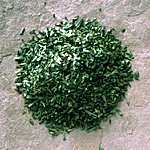
Tarragon
General Description
Tarragon is a small, shrubby herb, Artemisia dracunculus, in the sunflower family. Two species are cultivated, Russian and French. Leaves of the French variety are glossier and more pungent. Most commercial Tarragon comes from dried leaves of the French Tarragon plant.
Geographical Sources
Tarragon is native to southern Russia and western Asia. Today, its primary producer is France.
Traditional Ethnic Uses
Tarragon is commonly known as a flavoring for vinegar and is used in pickles, relishes, prepared mustards, and sauces. Tarragon also goes well with fish, meat, soups and stews, and is often used in tomato and egg dishes. Tarragon adds distinctive flavor to sauces.
Taste and Aroma Description
Tarragon has a slightly bittersweet flavor and an aroma similar to anise.
History/Region of Origin
Tarragon, unlike many other herbs, was not used by ancient peoples. It was mentioned briefly in medieval writings as a pharmaceutical, but did not come into common use until the 16th century in England. It was brought to the United States in the early 19th century.
Storage Tips
Store in cool, dark, dry places.
A Few Ideas to Get You Started
Tarragon adds flavor to egg and cheese dishes, light soups and fresh fruits. To baste chicken, fish or seafood, blend Tarragon with butter, chives, and lemon.
